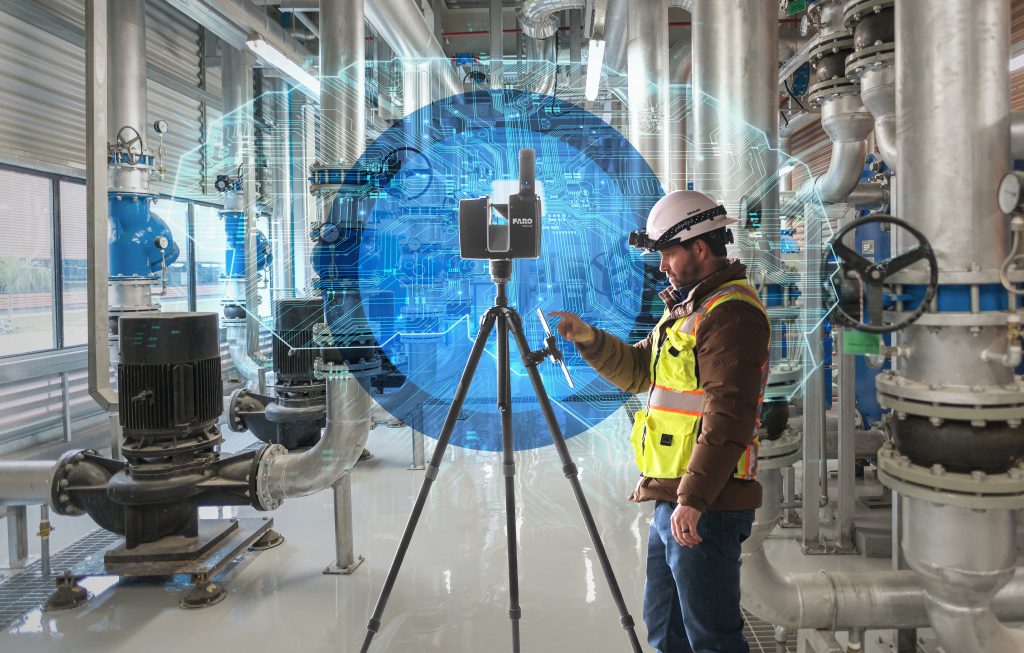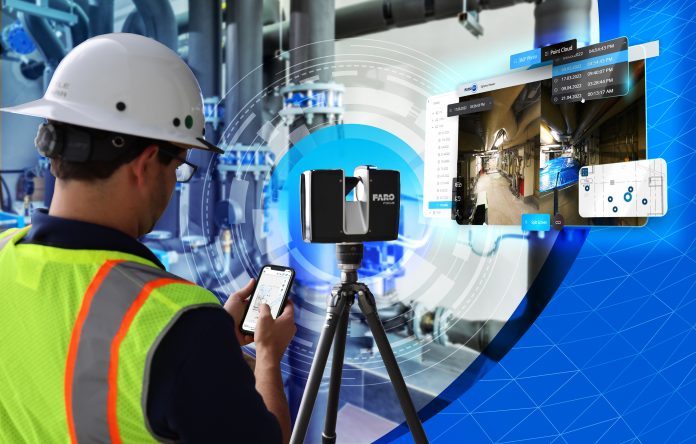In this article, FARO Technologies explores the value of artificial intelligence and 3D laser scanning for MEP applications
Back in 2011, artificial intelligence experienced a major “ah ha” moment when IBM’s question-answering computer Watson stunned the world with its commanding victory over its human challengers on the popular American quiz show Jeopardy!
Part publicity stunt, part proving ground, Watson in 2023 remains a proper noun synonymous with artificial intelligence — even if some of the supercomputer’s lustre has worn off.
Today, other companies like Amazon, Microsoft, Boston Dynamics and Google have leapt ahead in the AI race. And in November, San Francisco-based OpenAI, an AI research and deployment company, garnered global attention with ChatGPT, the company’s natural language online chatbot.
Which is to say that while AI is by no means omniscient, it’s clear the technology is advancing fast. And it’s a technology that’s finding everyday use. This will be especially true when in the near-future AI systems are paired with already established technology like 3D laser scanning for mechanical, electrical and plumbing applications, the must-have innards of any building, new or retrofit.
Intelligent input, intelligent output
Of course, what many don’t appreciate is that artificial intelligence is still largely only as good as the quality of data fed into the system, either by human operators or through another piece of technology gathering and organising the data, like 3D laser scanners and cloud-based SaaS data platforms.
In other words, artificial intelligence has yet to fully master what computing pioneer JCR Licklider described as “formulative thinking,” or the technology’s ability think beyond strict programming. But this is where humans and 3D laser scanning can assist.

For MEP professionals, whether you’re constructing something new or completing a redesign of a building for repurpose, enhancement or maintenance, the success and timeline of an entire project relies on accurate and comprehensive data of the site. Any inaccuracies or clashes in MEP installation can lead to unnecessary rework, higher costs and a subpar final result.
3D capture technology ensures MEP designs are accurate, and that piping and plumbing and ductwork for HVAC fit narrow spaces with tight tolerances with ease. Even in more open spaces like mechanical rooms, the same benefits apply. Only once this data is captured and shared can sophisticated AI software like the ones currently being developed do its job.
The advantages of 3D laser scanning
The advantages to working with 3D laser scanning hardware and software solutions as a necessary first step for MEP applications are many, including:
- Faster installation verification: Instead of relying on cumbersome manual measurement, 3D reality capture devices verify the built environment (which includes MEP) with greater accuracy and in a fraction of the time while accompanying software makes it easy to convert raw point cloud data into tangible, actionable information.
- Enhanced as-built-to-BIM comparison: With 3D laser scanning and construction software, you can compare the installation of the above-mentioned MEP components to the BIM output and identify accurate MEP placement.
- Simplify data organisation and project collaboration: Reduce the risk of miscommunications or misunderstandings with more advanced collaboration tools. Increasingly, the technology enables the secure sharing of all data with project stakeholders from anywhere in the world. Instead of explaining critical details over multiple communication channels, centralised information sharing is key.
- More accurate retrofit/remodelled projects: Most retrofits begin the same way: determining how much you can actually rely on the original design documentation. Today’s advanced point cloud and data processing eliminate this possible pain point. With 2mm to 5mm accuracy, the latest scan-to-BIM technology ensures an as-built 3D replica of what actually exists.
All-in for AI
Once you have all this accurate 3D data collected, organised and shared, what next? Where does AI fit in?
AI for MEP can be useful in two ways. The first is as a means of culling data and pattern recognition. Every MEP system is necessarily designed differently. But what if one design or set of designs is superior: for example, being more energy efficient by requiring less piping? AI has the potential to review thousands of MEP projects in near real-time and identify the best/most energy-efficient solutions. Beyond eco-friendliness, AI can also be used to determine other considerations, like cost-effectiveness and strategic implementation.
The second way AI can be used for MEP applications is in its project management. AI can monitor, collect, control, evaluate and manage energy consumption in relation to MEP needs across an entire building or set of buildings. AI can also be useful in long-term energy management system planning, of which MEP is an essential component. It also, according to at least one New York-based engineering firm, can “analyse processes that drive the decision-making around what changes need to be made in the MEP design and predict issues only to provide tailor-made solutions for the same”.
The end result is that successful MEP installation stands to benefit from the near-term union of AI, 3D laser scanning and the all-important human component working together: 3D scanning and human operators to input/provide data, and AI to assist in identifying enhanced efficiencies and inform long-term energy system management.
In the not-too-distant future, however, as artificial intelligence breaks new analytical and communications ground, natural language computers like Watson and online bots like ChatGPT, and other AI algorithms currently under development, will feel increasingly antiquated. Tomorrow’s AI could far surpass our wildest expectations.
Or as ChatGPT explains it: “AI will continue to evolve as the technology advances and is more widely adopted. Therefore, it is important to actively consider and address potential implications through research, regulation and ethical guidelines.”
On that point, humans and AI are in perfect alignment.
Amanda Hidalgo
Office of Corporate Communications
FARO Technologies
Tel: +1 700 161 1036
amanda.hidalgo@faro.com
*Please note: This is a commercial profile.

















